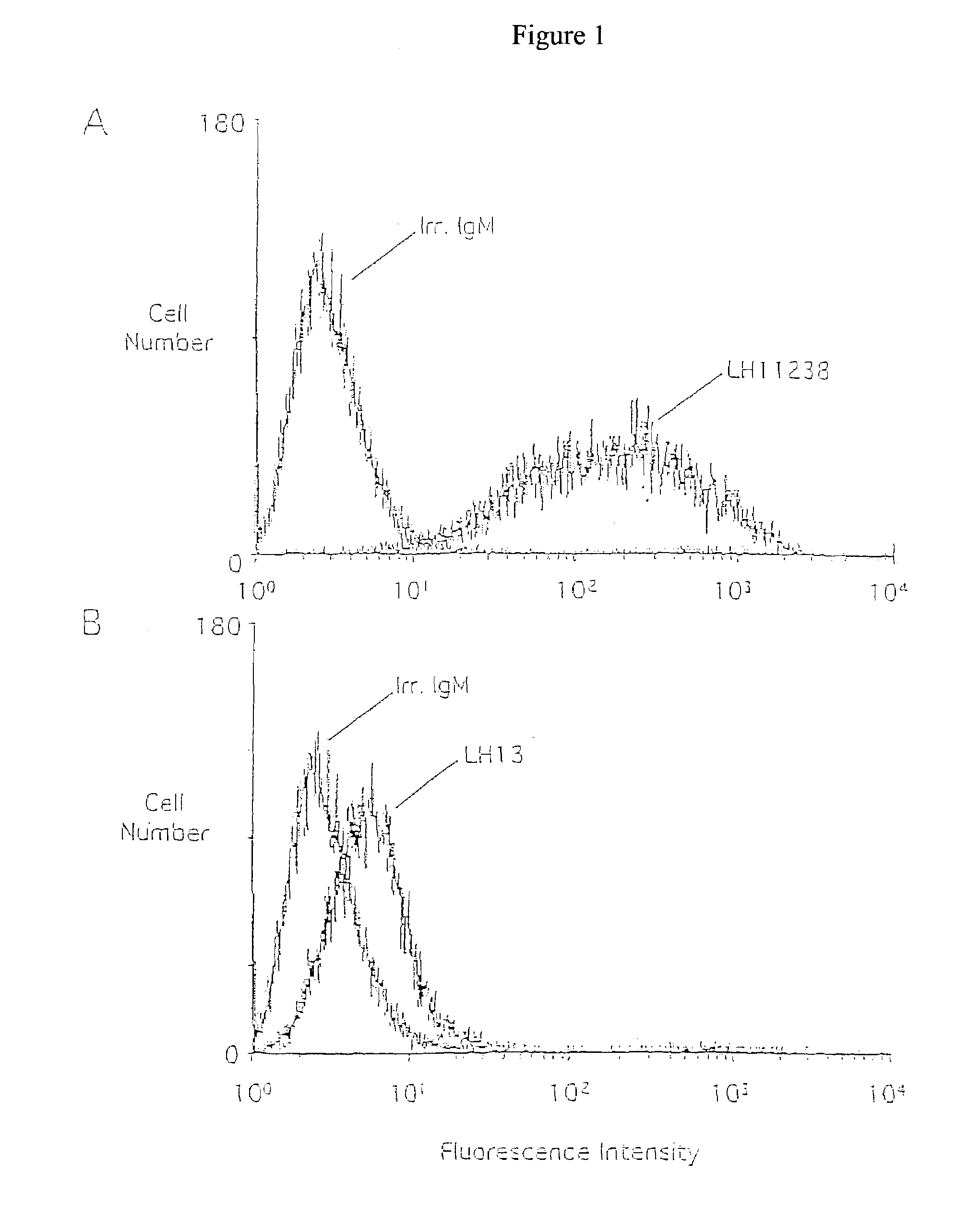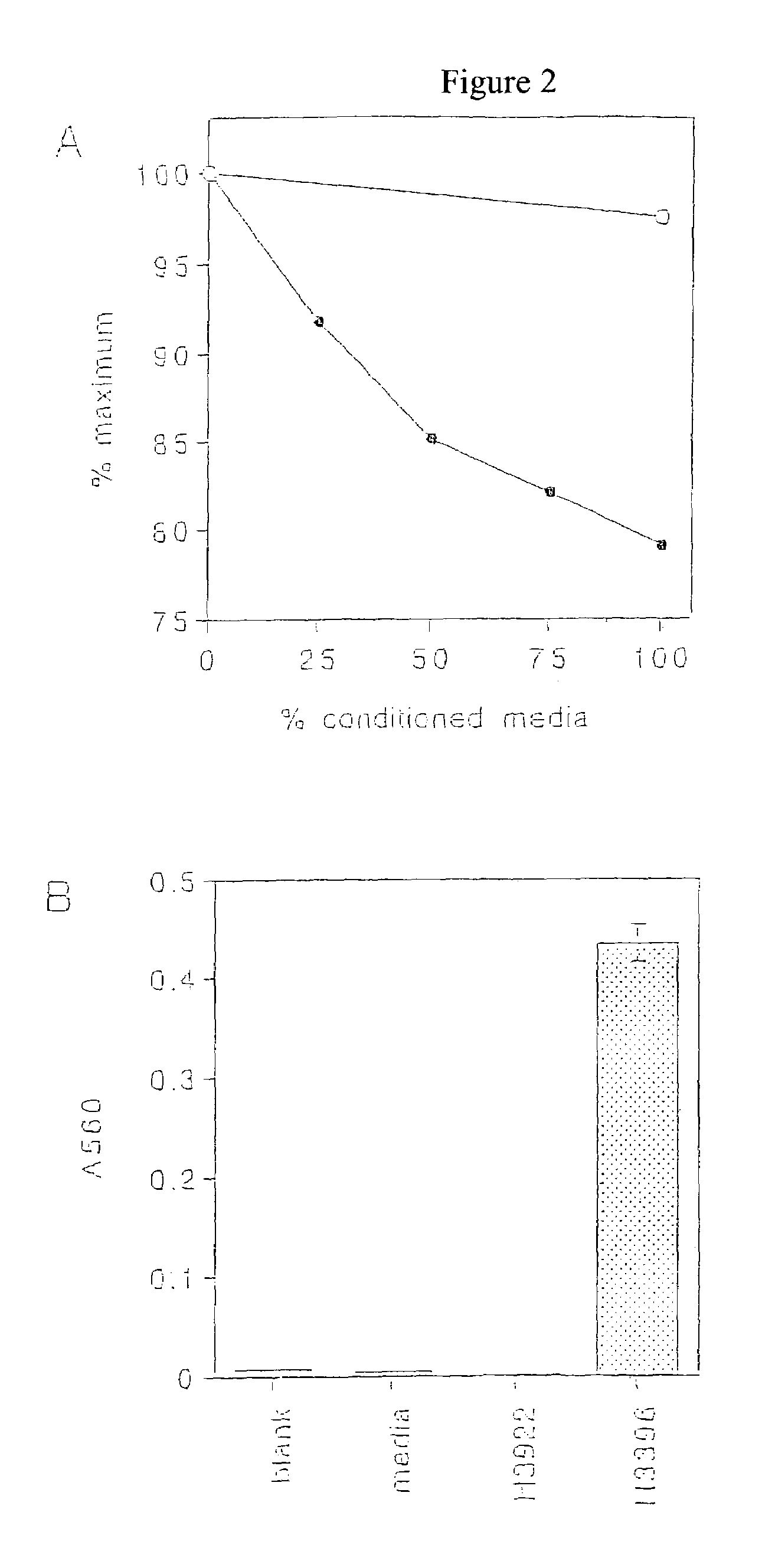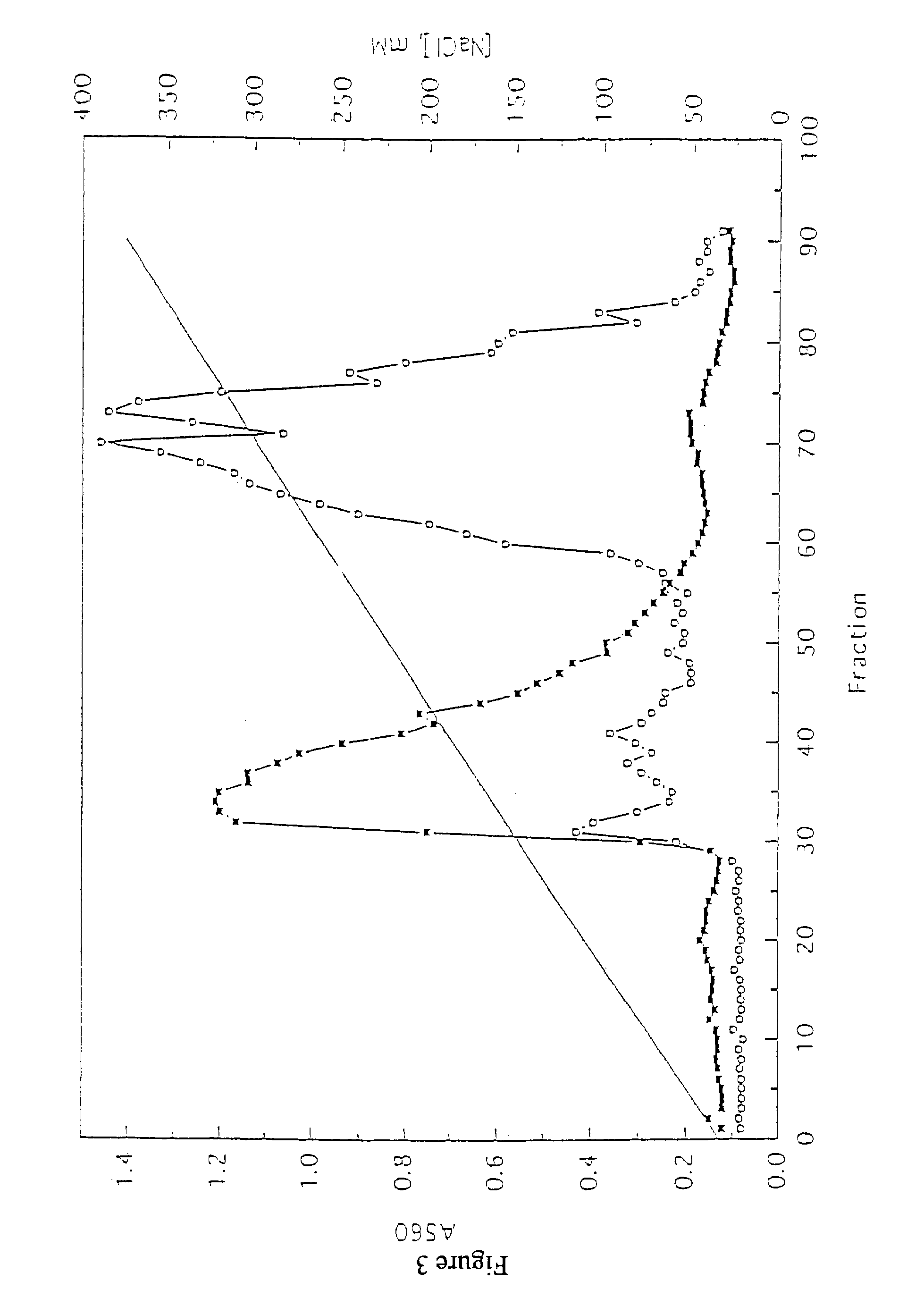Tumor specific monoclonal antibodies
a monoclonal antibody and tumor-specific technology, applied in the field of cancer, can solve the problems of lack of malignant tumor development, and inability to achieve specificity for cancer cells, and achieve the effect of reducing the proliferation of neoplastic cells
- Summary
- Abstract
- Description
- Claims
- Application Information
AI Technical Summary
Benefits of technology
Problems solved by technology
Method used
Image
Examples
example i
Production of Tumor-Specific Human Monoclonal Antibodies
[0149]This Example shows production of hybridomas that secrete human monoclonal antibodies specifically reactive with tumor cells. A procedure for immunizing normal lymphocytes in vitro with tumor cells or cell membranes prior to immortalization is described. This procedure allowed enrichment of lymphocytes producing novel tumor-reactive human monoclonal antibodies. These human monoclonal antibodies will be useful for cancer immunotherapeutic and immunodiagnostic procedures.
[0150]Lymphocytes were prepared as follows. Spleen tissue was isolated from accident victims, fragmented, and forced through a no. 50 mesh wire screen (Bellco, Vineland, N.J.). The cells were collected by centrifugation at 250×g for 10 min and RBC were removed by ammonium chloride lysis. The remaining cells were washed, resuspended in freezing medium (40% RPMI, 50% FCS and 10% DMSO) at a concentration of 100 to 300×106 cells / ml, frozen in 1.5-ml aliquots, an...
example ii
Immunoreactivities of LH13 and LH11238 Antibodies
[0175]This Example shows the immunoreactivities of LH13 and LH11238 antibodies with a panel of human tumor cells.
[0176]In order to use LH13 and LH11238 antibodies for immunodiagnostic and immunotherapeutic purposes, the range of tumor types expressing the corresponding antigens needs to be identified. Tumor cell lines are representative of the corresponding tumor type, and normal fibroblasts are representative of non-neoplastic tissues. The tumor cell lines were derived from melanomas, lung carcinomas, ovarian carcinomas and breast carcinomas. The human monoclonal antibodies of the invention were tested for immunoreactivity with both human cancer cell lines and normal fibroblasts.
[0177]H3396, H3464, H3477 and H3922 are cultured cell lines established from metastases of human breast adenocarcinoma, which were explanted and maintained in culutre. H2981 and H2987 are cultured cell lines established from human lung carcinomas, which were ...
example iii
Binding Activity of LH13 and LH11238 Human Monoclonal Antibodies
[0182]This Example shows the binding activity of human monoclonal antibodies LH13 and LH11238 with normal and tumor cells.
[0183]In order to determine the immunoreactivity of human monoclonal antibodies with live tumor cells and normal cells, flow cytometry (FACS analysis) was used. H3464 breast tumor cells were chosen because they expressed both LH13 and LH11238 antigens by ELISA analysis and were readily isolated as a single cell suspension. Normal peripheral blood lymphocytes were also examined as representative of normal tissues. Facs analysis additionally permits examination of heterogeneity of a cell population with respect to antigen expression.
[0184]H3464 cells were removed from culture dishes with trypsin or Versene (EDTA), washed with PBS, resuspended at 2×106 cells / ml in tumor media, and allowed to recover 2 h at 37° C. Antibodies were incubated at 5.0 μg / ml with 1×106 tumor cells in 50 μl total volume for 30 ...
PUM
| Property | Measurement | Unit |
|---|---|---|
| Fraction | aaaaa | aaaaa |
| Capacitance | aaaaa | aaaaa |
| Cytotoxicity | aaaaa | aaaaa |
Abstract
Description
Claims
Application Information
 Login to View More
Login to View More - R&D
- Intellectual Property
- Life Sciences
- Materials
- Tech Scout
- Unparalleled Data Quality
- Higher Quality Content
- 60% Fewer Hallucinations
Browse by: Latest US Patents, China's latest patents, Technical Efficacy Thesaurus, Application Domain, Technology Topic, Popular Technical Reports.
© 2025 PatSnap. All rights reserved.Legal|Privacy policy|Modern Slavery Act Transparency Statement|Sitemap|About US| Contact US: help@patsnap.com



